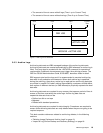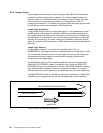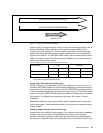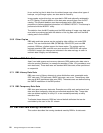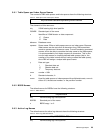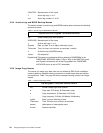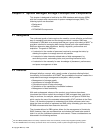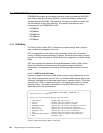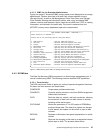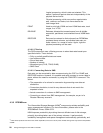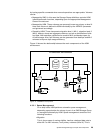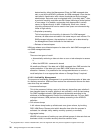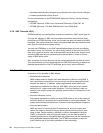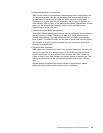
System Managed Storage Concepts and Components 27
4.3.1.2 ISMF for the Storage Administrator
Figure 9 on page 27 shows the ISMF primary option menu displayed for a storage
administrator. Options allow lists to be built from volume selection criteria
(Storage Group), as well as the Management Class, Data Class, and Storage
Class facilities allowing the individual to define, alter, copy, and delete SMS
classes, volumes, and data sets. Again, these lists are built from VTOC or catalog
information, and tailored in the same way. This panel is selected from the
ISPF/PDF primary menu (dependent upon site customization).
Figure 9. ISMF Primary Option Menu for Storage Administrators
4.3.2 DFSMSdss
The Data Set Services (DSS) component is a disk storage management tool. It
can be invoked using ISMF. The following sections describe DSS capabilities.
4.3.2.1 Functionality
The DSS component is able to perform a variety of space management functions.
Of these, the most common are listed below:
COMPRESS Compresses partitioned data sets.
CONVERTV Converts existing volumes to and from SMS management
without data movement.
COPY Performs data set, volume, and track movement, allowing
the movement of data from one disk volume to another,
including unlike device types.
COPYDUMP Allows the generation of 1 to 255 copies of DFSMSdss
produced dump data. The data to be copied can be tape
or disk based, and copies can be written to tape or disk
volumes.
DEFRAG Reduces or eliminates free-space fragmentation on a disk
volume.
DUMP Performs the dumping of disk data to a sequential volume
(either tape or disk). The process allows either:
ISMF PRIMARY OPTION MENU - DFSMS/MVS 1.5
Enter Selection or Command ===>
Select one of the following options and press Enter:
0 ISMF Profile - Specify ISMF User Profile
1 Data Set - Perform Functions Against Data Sets
2 Volume - Perform Functions Against Volumes
3 Management Class - Specify Data Set Backup and Migration Criteria
4 Data Class - Specify Data Set Allocation Parameters
5 Storage Class - Specify Data Set Performance and Availability
6 Storage Group - Specify Volume Names and Free Space Thresholds
7 Automatic Class Selection - Specify ACS Routines and Test Criteria
8 Control Data Set - Specify System Names and Default Criteria
9 Aggregate Group - Specify Data Set Recovery Parameters
10 Library Management - Specify Library and Drive Configurations
11 Enhanced ACS Management - Perform Enhanced Test/Configuration Management
C Data Collection - Process Data Collection Function
L List - Perform Functions Against Saved ISMF Lists
R Removable Media Manager - Perform Functions Against Removable Media



